Solar energy will play a dominant role in India’s transition to clean energy, contributing an estimated 280 GW of the nation’s targeted 500 GW of non-fossil fuel capacity by 2030. As of July 31, 2025, the country had already installed 119 GW of solar capacity, according to analyst figures.
Growth has been largely driven by massive utility-scale projects in solar-rich states like Rajasthan and Gujarat. However, the road to large-scale solar implementation is not without challenges. Many of India’s large-scale solar plants are underperforming, with discrepancies between the expected and actual energy yield. Conversations with project developers, engineering, procurement and construction (EPC) suppliers, and other stakeholders suggest there are various causes for this, meaning project performance should be comprehensively monitored.
Key challenges
As India’s solar buildout continues, fewer “perfect” patches of land will be available, and developers will need to consider building on more complex terrain.
A study by The Energy and Resources Institute (TERI) has estimated India’s total solar potential at 10.83 TW, considering a land-use norm of three acres per MW for ground-mounted and floating solar installations. Ground-mounted solar on barren land contributes the largest share, with 4.9 TW of theoretical potential. A high-level assessment was carried out to identify suitable areas for utility-scale solar installations. Land parcels in mountainous and protected desert zones were excluded, and only 50% of the remaining barren land was considered usable –to ensure space for grazing, biodiversity, and community needs, thereby promoting a balanced land-use strategy.
Among all of India’s states and union territories, Rajasthan in the northwest holds the highest potential for ground-mounted solar on barren land at 1.24 TW (post-exclusion), followed by neighboring Madhya Pradesh at 731.3 GW, and Maharashtra to the south at 606.7 GW.
However, irregular terrain, soil instability, and fragmented land parcels pose challenges to large-scale solar deployments, especially in states like Rajasthan.
“Securing large, contiguous land parcels for gigawatt-scale projects remains one of the biggest challenges,” said Sudhir Nain, head of domestic operations at Jakson Green, a developer and manufacturer headquartered in Uttar Pradesh. “Local disturbances, such as land disputes or community resistance, not only delay operations but also dent investor confidence.”
Scattered layouts result in higher costs and more complex operations and maintenance.
“Irregular terrain, soil instability, and erosion not only complicate construction but can also raise long-term maintenance costs,” added Varchasvi Gagal, chief executive officer at project developer Datta Power Infra.
Similar to other regions, India’s electricity network brings further limitations because transmission infrastructure development lags the pace of generation capacity expansion.
“Underdeveloped infrastructure can drastically bring down a project’s capacity to supply energy to the grid,” said Jakson Green’s Nain. “There are many such projects where generated energy is left unutilized due to transmission constraints.”
Sanjeev Gupta, director of technical and projects at EPC specialist Hartek Group, said that grid congestion and curtailment often reduce plant output. “The challenge of integrating reactive power adds to the problem.”
Harsh climates in many regions of India are another challenge. Extreme temperatures, frequent sandstorms, and dust accumulation affect plant performance and escalate operation and maintenance costs.
PV modules don’t reach their full efficiency potential when operating at high temperatures and tend to degrade more quickly when these temperatures are sustained for long periods. “The extreme climatic conditions in Rajasthan and Gujarat, from soaring temperatures to sandstorms, impact PV panel efficiency and increase O&M costs,” said Gagal.
A joint study by researchers at Malaviya National Institute of Technology Jaipur and Indian Institute of Technology Bombay demonstrated the impact of soiling on module temperatures and project performance in the Jaipur region of Rajasthan.
The daily average reduction in power due to increased temperature was 0.614%, 1.044% and 1.31%, while on the same days, the daily maximum reduction observed was 1.55%, 2.53% and 3.46%, respectively. Higher temperatures led to energy yield losses and may also affect PV module health in the long run.
“Extreme heat, dust storms, and high wind speeds accelerate wear and tear of equipment, reduce panel efficiency, and demand frequent cleaning and maintenance,” said Hartek Group’s Gupta. “With the increase in temperature, the efficiency of a solar plant goes down.”
Plant performance depends on the use of quality PV modules and other components.
“Sub-standard modules, weak mounting structures, or poor procurement practices inevitably drag down performance ratios over time,” noted Datta Power Infra CEO Gagal.
Gupta added that “soiling, shading, hotspots, defects in PV modules, and potential-induced degradation (PID) remain persistent operational challenges, lowering generation efficiency in all PV based generating station irrespective of location.”
Finally, while India’s government is broadly supportive of renewables, there are various regulatory hurdles that often creep in. Land title disputes, delayed clearances, and inconsistent state-level implementation can derail project timelines.
Among environmental constraints, Gupta noted protected habitats as a complicating factor. “Rajasthan faces a unique hurdle with the Great Indian Bustard (GIB) habitat. Restrictions on transmission line construction and the removal of LED reflectors, following Ministry of Defence orders, complicate project execution in sensitive zones.”
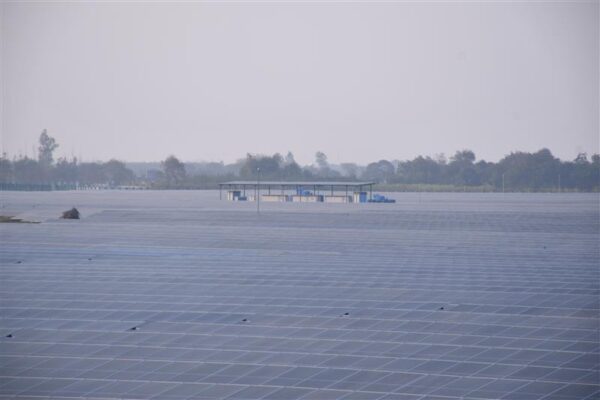
Jakson Green
Strategic interventions
Gagal emphasized that mitigating underperformance starts with getting the fundamentals right at the site selection stage: “Precision site selection and micro-siting, backed by terrain mapping, compression studies, and detailed solar resource assessments, ensures projects are located where they can truly deliver.”
Once land is secured, efficient utilization becomes critical.
“Optimized plant layouts, higher-efficiency modules, and the adoption of suitable advanced technologies can substantially increase energy output per acre – a critical consideration in land-constrained markets,” added Gagal.
The industry is increasingly adopting bifacial modules, trackers, and compact layouts for higher energy yield per acre.
Nain highlighted the shift toward higher-wattage modules, supported by technological advancements in PV cell and module technology and designs, which reduce the number of panels required for a given system capacity and enable greater energy generation from the same parcel of land. Larger capacity DC cables are also being used to reduce line losses. “A case study detailed that system losses in solar plants include around 3% loss due to electrical cables, alongside 2% from inverters and 5% from module mismatch.
Also, a recent Central Electricity Authority study highlighted how transmission and technical losses continue to weigh heavily on India’s renewable energy output. This underscores how using larger gauge DC cables can cut losses and improve net output making such measures critical, Jakson Green’s Nain explained.
Land scarcity means optimal plant layout is essential. “Tighter but well-considered spacing guarantees a higher ground coverage ratio and better land utilization. This is crucial when securing large plots is a challenge,” according to Nain.
Gupta said that “restrictions on tree cutting in line with [environmental protection principles] and religious sensitivities towards trees, especially in Rajasthan, restricts land clearance. That’s where advanced site-mapping and design tools can optimize panel layouts to minimize shading losses without disturbing green cover. Elevated structures in select cases can also help maximize usable land.”
The EPC company director added that instead of leaving buffer zones around water channels, projects can integrate soil stabilization techniques, embankments and bio-engineering solutions to safeguard natural drainage while using adjacent land for solar deployment.
Performance over the project’s lifecycle depends on robust O&M practices.
“Automated cleaning systems, predictive maintenance, and real-time monitoring tools are essential to sustain long-term efficiency,” Gagal said.
Transmission planning is equally important. Given limited capacity, early coordination with state authorities and incorporating redundancies are vital to reducing curtailment risks.
Gupta pointed out that with increasing demand for transmission corridors, congestion and shadows from high-voltage lines impact usable land. Careful master planning of solar parks, along with underground cabling or higher tower designs, can reduce land wastage caused by transmission shadows. Strong quality assurance across the EPC cycle – from procurement standards to supplier audits and third-party checks – ensures the asset remains reliable over its lifetime.
Overcoming real-world obstacles
• Jakson Green tackled land fragmentation by acquiring multiple smaller plots and linking them through overhead lines to create a unified project. “While this approach adds engineering complexity and higher transmission costs, it has proven to be a practical way to keep scale intact. We have successfully transformed dispersed land parcels into utility-scale solar projects through smart design and active community involvement,” said Sudhir Nain, head of domestic operations at Jakson Green.
This content is protected by copyright and may not be reused. If you want to cooperate with us and would like to reuse some of our content, please contact: editors@pv-magazine.com.
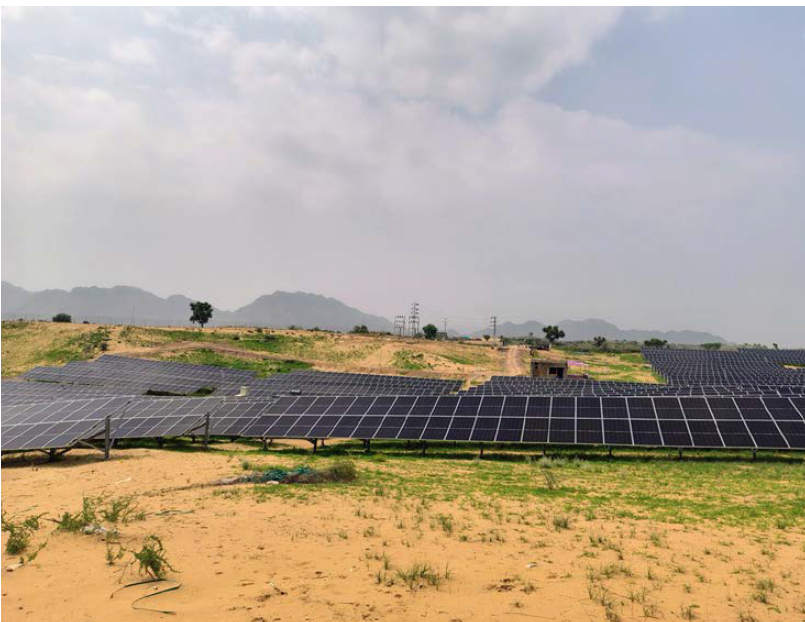




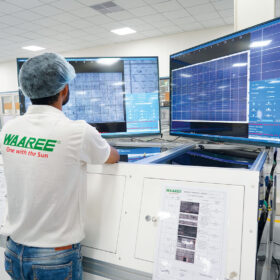
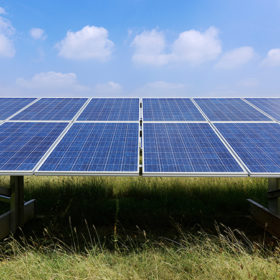

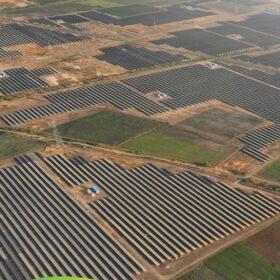
By submitting this form you agree to pv magazine using your data for the purposes of publishing your comment.
Your personal data will only be disclosed or otherwise transmitted to third parties for the purposes of spam filtering or if this is necessary for technical maintenance of the website. Any other transfer to third parties will not take place unless this is justified on the basis of applicable data protection regulations or if pv magazine is legally obliged to do so.
You may revoke this consent at any time with effect for the future, in which case your personal data will be deleted immediately. Otherwise, your data will be deleted if pv magazine has processed your request or the purpose of data storage is fulfilled.
Further information on data privacy can be found in our Data Protection Policy.